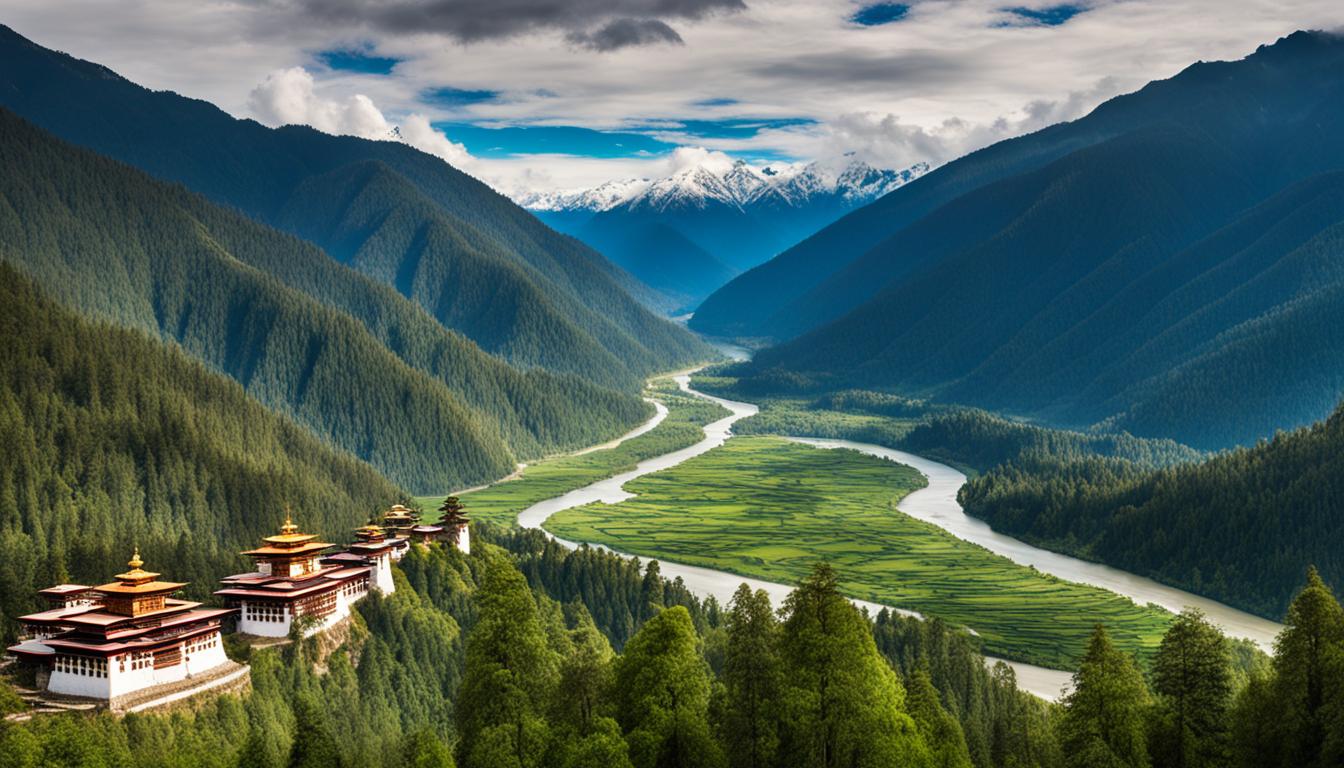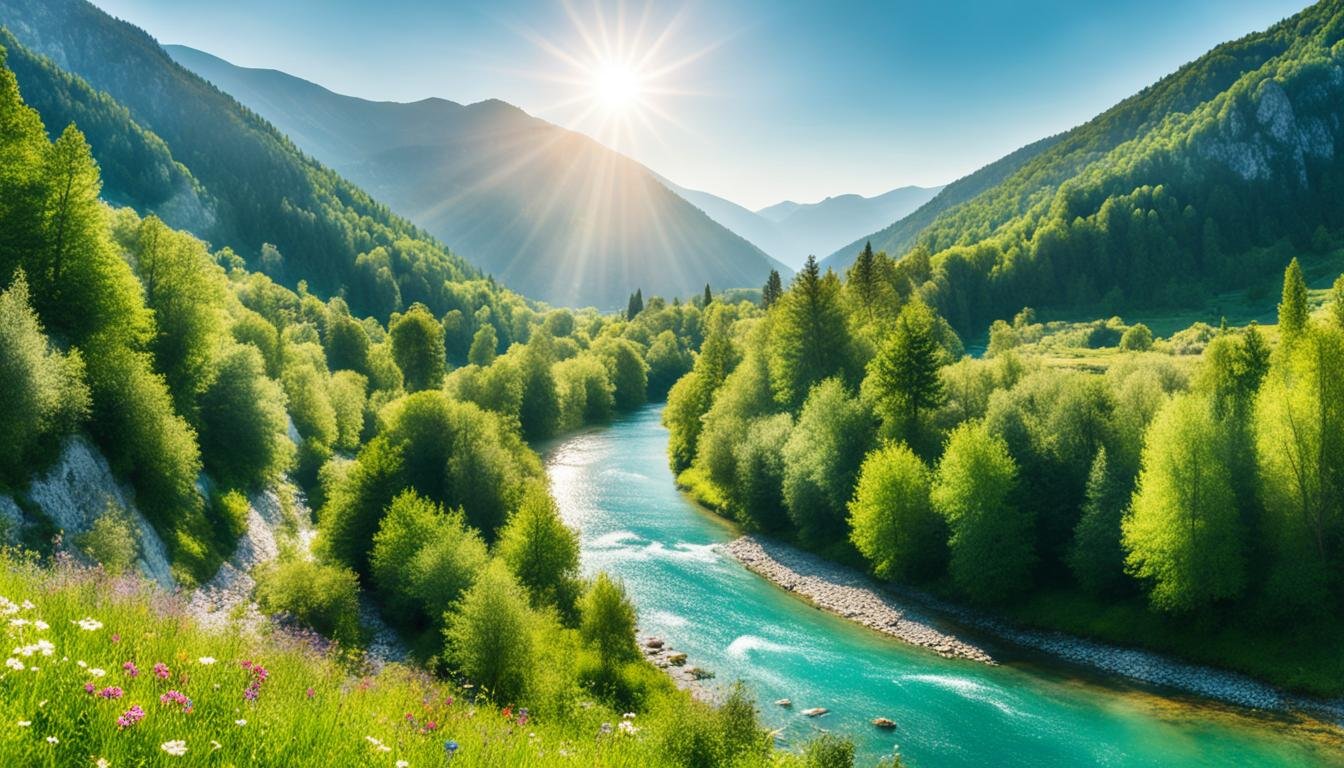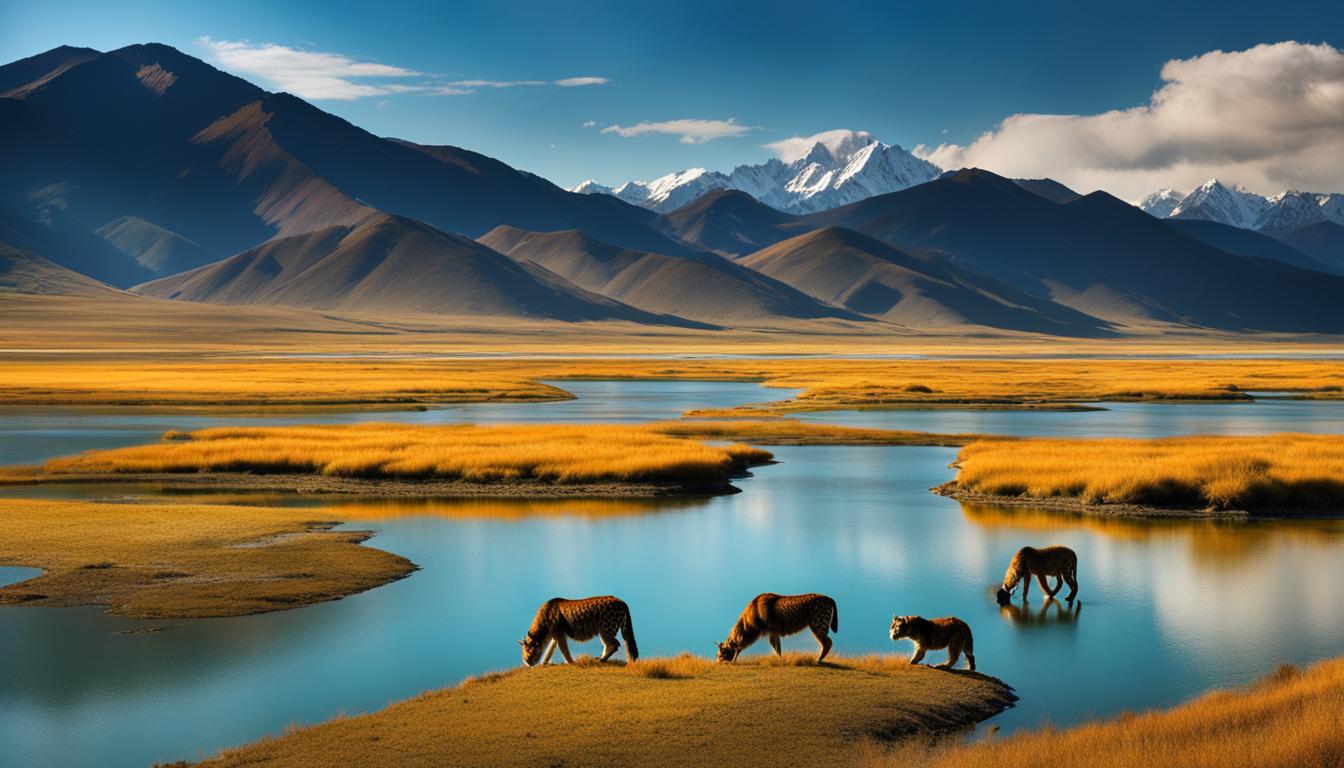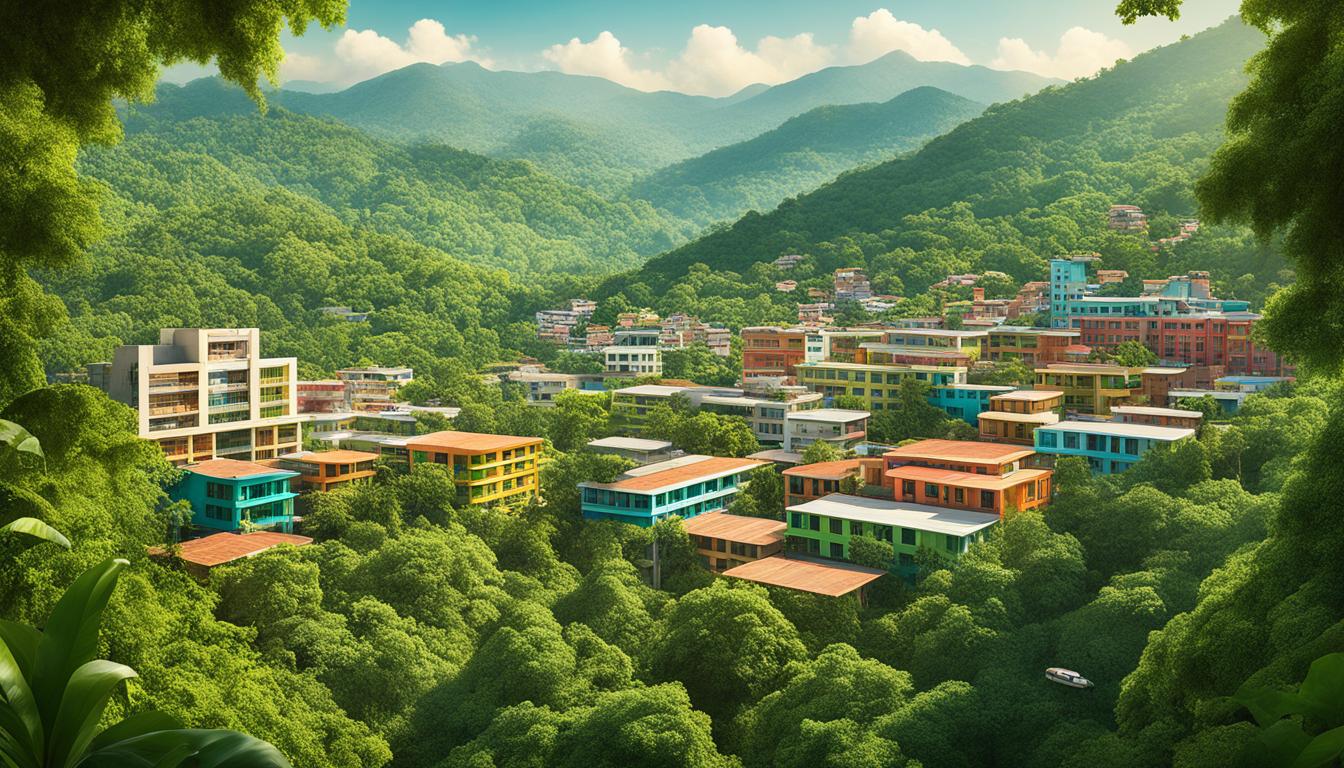Bolivia Sacred Natural Sites and Biodiversity
Did you know that Bolivia has designated over 17 percent of its land as protected areas, making it a haven for biodiversity conservation? From the towering Andes mountains to the lush Amazon rainforest and the arid Chaco dry forests, Bolivia showcases a remarkable array of ecosystems and wildlife. This South American gem is not only known for its stunning landscapes but also for its rich cultural heritage and traditional ecological knowledge.
Key Takeaways:
- Bolivia has designated over 17 percent of its land as protected areas to conserve its diverse ecosystems and rich biodiversity.
- The indigenous population of Bolivia, with more than 1.5 million people, plays a crucial role in conserving biodiversity and traditional ecological knowledge.
- Threats to Bolivia’s biodiversity include the expansion of agriculture, mining activities, climate change, erosion, and damming of rivers.
- Key protected areas in Bolivia include the Mancornadas Lagoons, South Lípez Desert, Pantanal Wetlands, Noel Kempff Mercado National Park, and Lake Titicaca.
- Bolivia’s traditional practices, such as textile weaving, sustainable homes, and farming techniques, contribute to its cultural preservation and environmental sustainability.
Ecological Diversity in Bolivia
Bolivia’s ecological diversity is a testament to its incredible geographical features and tropical location. The country is graced with breathtaking landscapes, from the majestic Andes Mountains to the lush Amazon Rainforest and the unique Chaco Dry Forests. These distinct ecosystems provide a home to a wide array of plant and animal species, making Bolivia a true haven of biodiversity.
The Andes Mountains, stretching across the western part of Bolivia, showcase awe-inspiring peaks, snow-capped summits, and fertile valleys. This mountain range not only offers magnificent vistas but also serves as a vital habitat for numerous flora and fauna species adapted to the specific mountainous conditions.
The Amazon Rainforest, found in the northern part of Bolivia, is one of the most biodiverse regions on the planet. It boasts an unparalleled richness of flora and fauna, including iconic species like jaguars, macaws, and giant river otters. This expansive and vibrant rainforest ecosystem covers an extensive area, contributing significantly to Bolivia’s ecological diversity.
The Chaco Dry Forests, located in the southeastern part of the country, are a unique ecosystem characterized by its arid conditions and thorny vegetation. This region serves as a habitat for various species adapted to survive in dry environments, such as armadillos, capybaras, and the elusive jaguarundi.
In recognition of the importance of preserving its ecological diversity, Bolivia has designated more than 17 percent of its land as protected areas. These protected areas play a crucial role in safeguarding the diverse ecosystems and the species that rely on them for survival. By establishing these protected areas, Bolivia demonstrates its commitment to conservation for the benefit of present and future generations.
Overall, Bolivia’s ecological diversity is a testament to the country’s natural wonders and commitment to conservation. The Andes Mountains, Amazon Rainforest, and Chaco Dry Forests exemplify the wealth of ecosystems found within its borders. By preserving these precious habitats through protected areas, Bolivia strives to ensure the long-term survival of its unique biodiversity.
Indigenous Conservation Practices in Bolivia
The indigenous population of Bolivia, comprising more than half of the country’s population, has a deep connection to the land. Over centuries, they have developed traditional ecological knowledge that contributes to the conservation of biodiversity in Bolivia. These indigenous communities engage in various sustainable practices that promote the preservation of the environment and its rich biodiversity.
One significant aspect of indigenous conservation practices is sustainable farming. Indigenous farmers employ traditional farming techniques that prioritize the long-term health of the land. They practice agroforestry, crop rotation, and the use of natural fertilizers, minimizing the impact on ecosystems while maintaining soil fertility. Through these practices, indigenous farmers contribute to the conservation of indigenous crops, preserve traditional seed varieties, and protect the genetic diversity of agricultural plants.
In addition to sustainable farming, indigenous communities in Bolivia maintain the tradition of textile weaving. Weaving is not only a cultural practice but also an environmentally conscious activity. Indigenous weavers use natural materials such as alpaca wool, cotton, and palm fronds to create intricate textiles. By utilizing sustainable materials and techniques, they preserve traditional knowledge while minimizing the ecological footprint associated with textile production.
“Our weaving techniques and designs have been handed down through generations. Weaving is not just an art form for us; it’s a way to honor our ancestors and protect our cultural heritage.” – María, Aymara weaver
Indigenous communities also prioritize the use of natural and locally-sourced materials in their construction practices. By using materials such as stone, wood, palm fronds, and sod, they build sustainable homes that are well-suited to the local climate. These traditional building methods minimize the use of processed materials and contribute to the preservation of natural resources in Bolivia.
The indigenous population’s deep connection to the land and their traditional ecological knowledge make them invaluable contributors to the conservation of biodiversity in Bolivia. With more than 1.5 million indigenous people living in or near protected areas, their presence plays a crucial role in safeguarding these critical ecosystems.
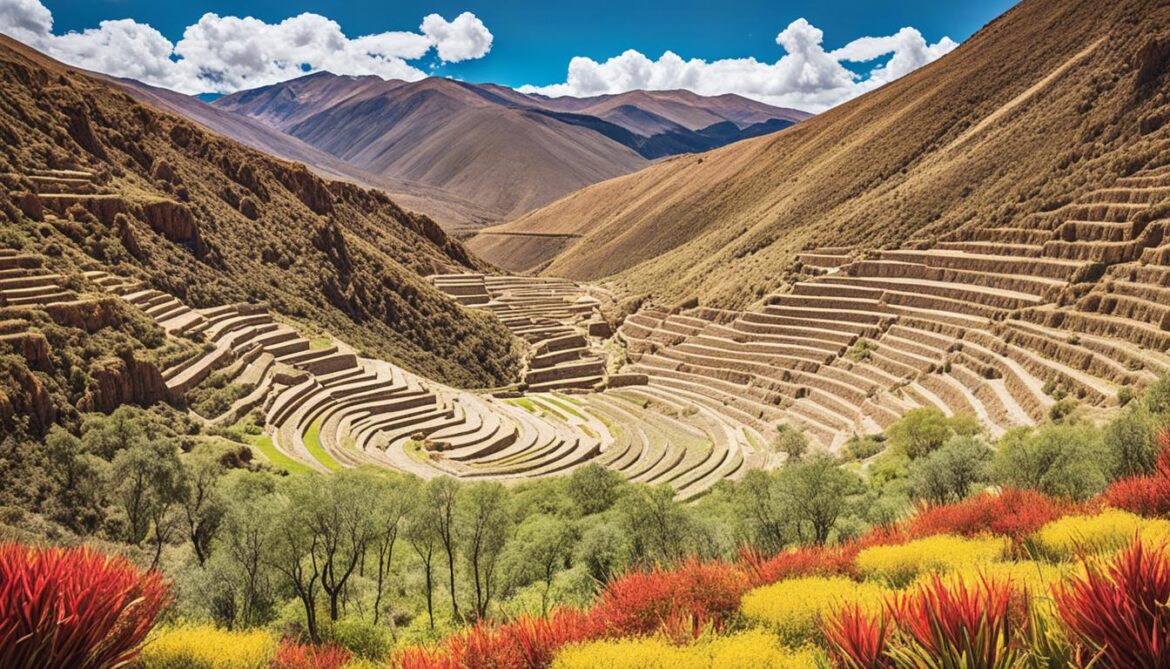
Threats to Biodiversity in Bolivia
Bolivia’s rich biodiversity is under threat from various sources that have the potential to disrupt delicate ecosystems and endanger numerous species. Understanding these threats is vital in guiding conservation efforts and implementing sustainable practices. The key threats to biodiversity in Bolivia include:
1. Expansion of Agriculture
The expansion of agriculture, particularly the conversion of natural habitats into farmland, poses a significant threat to biodiversity in Bolivia. As the demand for food increases, more land is being cleared for agricultural activities, resulting in the loss of vital habitats for plants and animals. This expansion often encroaches upon protected areas, further exacerbating the issue.
2. Mining in Bolivia
Bolivia’s rich mineral resources have attracted extensive mining activities, particularly in areas with high biodiversity. Mining operations often lead to habitat destruction, soil and water contamination, and the disruption of ecological processes. Additionally, the extraction of minerals contributes to deforestation and the release of greenhouse gases, exacerbating climate change concerns.
3. Climate Change
Climate change poses a significant threat to biodiversity worldwide, and Bolivia is no exception. Rising temperatures, altered precipitation patterns, and extreme weather events can lead to the loss of species and habitats. Changes in temperature and rainfall regimes can disrupt ecosystems, affecting plant growth, migration patterns, and the availability of resources for wildlife.
4. Erosion
Unsustainable land practices, including deforestation and overgrazing, contribute to soil erosion in Bolivia. Erosion can lead to the degradation of ecosystems and the loss of biodiversity. As soil erodes, it carries away essential nutrients, negatively impacting the growth and survival of plants and creating challenges for animal species that rely on these plants for food and shelter.
5. Damming of Rivers for Hydroelectric Power
The construction of dams for hydroelectric power generation disrupts river ecosystems and threatens aquatic biodiversity in Bolivia. Dams alter natural water flow, impede fish migration, and reduce the availability of suitable habitats for aquatic species. Additionally, the creation of reservoirs can flood large areas of land, leading to the loss of terrestrial habitats and contributing to the fragmentation of ecosystems.
Conservation Efforts in Bolivia
Despite these threats, Bolivia is actively working to protect and preserve its unique biodiversity. Conservation efforts involve collaboration between government agencies, non-governmental organizations, and indigenous communities. These efforts aim to find sustainable development alternatives and promote conservation practices.
The American Museum of Natural History’s Center for Biodiversity and Conservation is one organization actively involved in supporting conservation in Bolivia. Through research, education, and community engagement, they contribute to the understanding and preservation of Bolivia’s biodiversity.
Efforts to address the threats to biodiversity in Bolivia include:
- Establishing and managing protected areas to safeguard critical habitats and species.
- Supporting sustainable agricultural practices that minimize the impact on natural ecosystems.
- Promoting responsible mining practices that prioritize environmental preservation.
- Developing strategies to mitigate and adapt to the effects of climate change.
- Implementing erosion control measures to prevent soil loss and protect vulnerable ecosystems.
- Promoting sustainable energy alternatives to hydropower, reducing the need for damming rivers.
Through these conservation efforts, Bolivia aims to strike a balance between economic development and the protection of its unique biodiversity, ensuring a sustainable future for both people and nature.
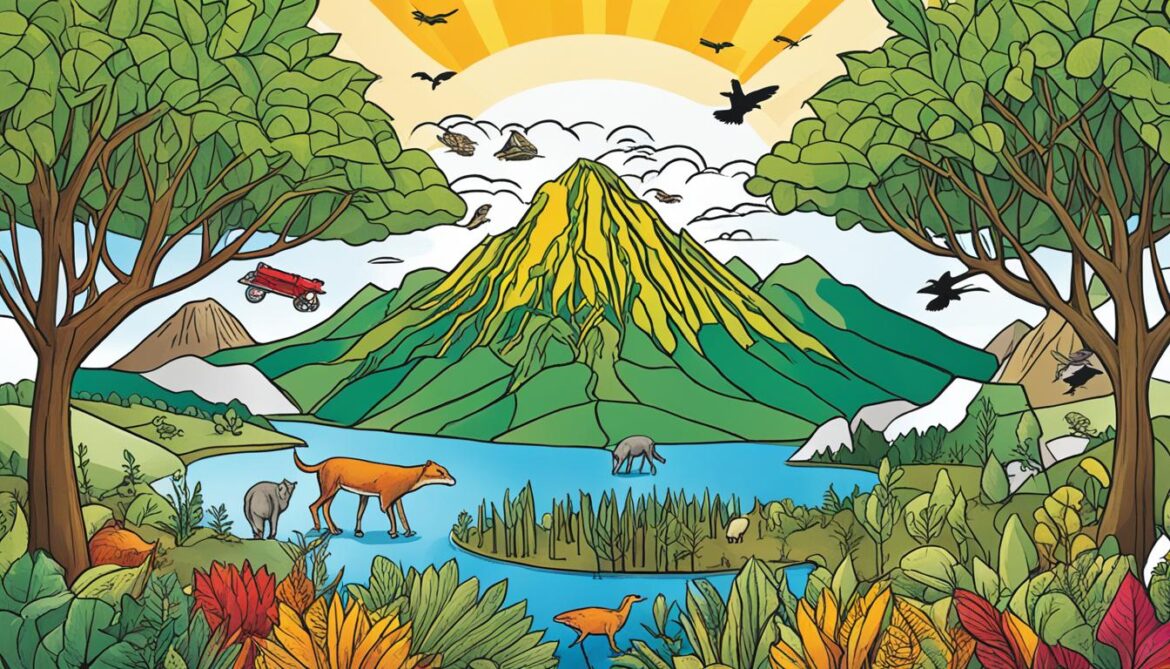
| Threats to Biodiversity | Evidence |
|---|---|
| Expansion of Agriculture | Loss of natural habitats due to deforestation for agriculture. |
| Mining in Bolivia | Habitat destruction, soil and water contamination, greenhouse gas emissions. |
| Climate Change | Rising temperatures, altered precipitation patterns, and extreme weather events. |
| Erosion | Unsustainable land practices leading to soil erosion. |
| Damming of Rivers for Hydroelectric Power | Disruption of river ecosystems and threats to aquatic biodiversity. |
Key Protected Areas in Bolivia
Bolivia is home to several key protected areas that play a vital role in conserving its rich biodiversity. These protected areas provide habitats for numerous species and contribute to the overall maintenance of ecosystem health and balance. Among these areas are the Mancornadas Lagoons, the South Lípez Desert, the Pantanal Wetlands, Noel Kempff Mercado National Park, and Lake Titicaca.
Mancornadas Lagoons
The Mancornadas Lagoons, located in Bolivia, are renowned for their diverse lowland forests and wetlands. These pristine habitats support a wide range of plant and animal species, making them a crucial part of Bolivia’s overall biodiversity conservation efforts.
South Lípez Desert
In the Bolivian Altiplano, you will find the South Lípez Desert, which constitutes another important protected area in Bolivia. This desert ecosystem is characterized by its unique flora and fauna, including endemic species that have adapted to the challenging desert conditions.
Pantanal Wetlands
The Pantanal wetlands cover a vast area spanning across Bolivia, Brazil, and Paraguay. This expansive wetland ecosystem is recognized as one of the world’s largest freshwater wetlands. It is a critical habitat for numerous species, including birds, reptiles, amphibians, and mammals.
Noel Kempff Mercado National Park
Noel Kempff Mercado National Park, situated in the northeast of Bolivia, boasts stunning landscapes and diverse habitats. The park is home to an array of wildlife, including jaguars, tapirs, and macaws. It has been designated as a UNESCO World Heritage Site, highlighting its significant contribution to biodiversity conservation.
Lake Titicaca
Another key protected area in Bolivia is Lake Titicaca, which is the largest freshwater lake in South America. This magnificent lake supports a unique ecosystem, including endemic fish species and diverse bird populations. It serves as a critical habitat for wildlife and plays a crucial role in the region’s cultural heritage and traditional practices.
| Protected Area | Location | Key Features |
|---|---|---|
| Mancornadas Lagoons | Bolivia | Lowland forests, wetlands |
| South Lípez Desert | Bolivian Altiplano | Unique flora and fauna, endemic species |
| Pantanal Wetlands | Bolivia, Brazil, Paraguay | Expansive freshwater wetlands, diverse wildlife |
| Noel Kempff Mercado National Park | Northeast Bolivia | Stunning landscapes, diverse habitats, UNESCO World Heritage Site |
| Lake Titicaca | Bolivia | South America’s largest freshwater lake, unique ecosystem |
These key protected areas underline Bolivia’s commitment to preserving its natural treasures and the remarkable biodiversity that calls these places home. By safeguarding these habitats, Bolivia ensures that future generations can continue to marvel at the incredible range of species and ecosystems that make this country truly exceptional.
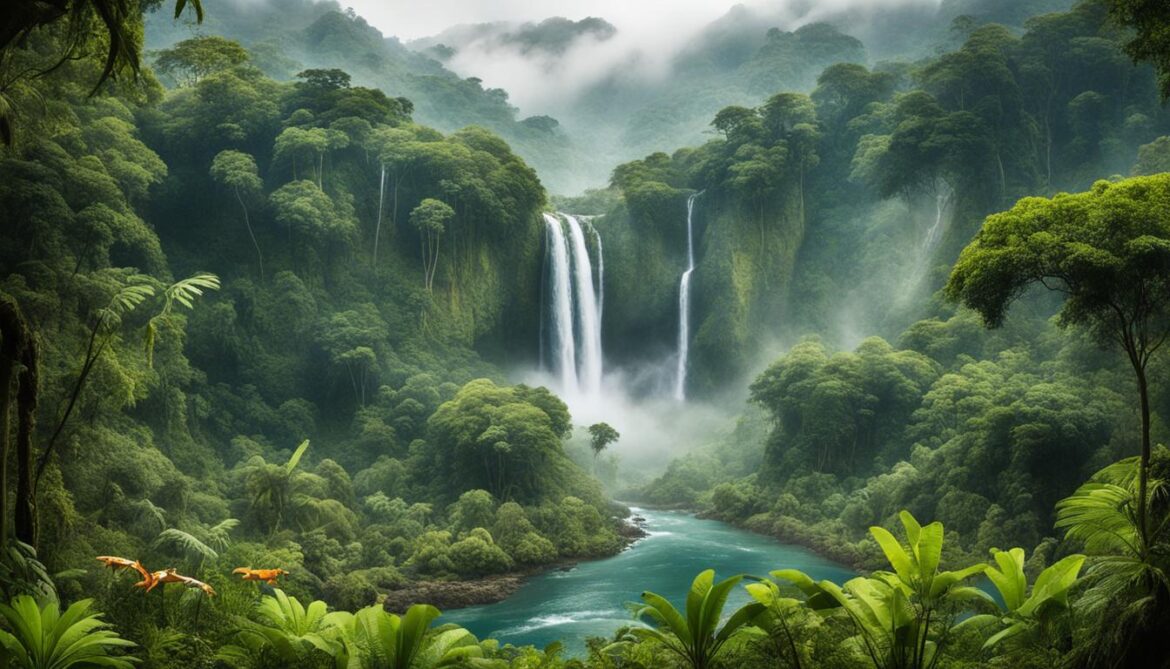
Traditional Textile Weaving in Bolivia
Traditional textile weaving is a significant part of Bolivian culture, with communities across the country practicing this craft for centuries. The skill and artistry involved in Bolivian weaving techniques have been passed down from generation to generation, preserving the rich textile traditions in Bolivia.
The diversity of Bolivian textiles is a testament to the vibrant and diverse culture of the country. Different ethnic groups have their own distinct styles, weaving techniques, and designs, creating a tapestry of creativity and craftsmanship. From the intricate patterns of the Aymara people to the bold colors and geometric motifs of the Quechua, Bolivian textiles reflect the unique heritage and identity of each community.
Bolivian weavers use a variety of materials to create their textiles, including locally sourced cotton, luxurious alpaca wool, and sustainable palm fronds. These materials are carefully chosen for their quality and versatility, allowing weavers to create intricate patterns and textures that bring their designs to life.
The textiles produced by Bolivian weavers serve a multitude of purposes. They are used to create traditional clothing, such as ponchos, blankets, and shawls, that not only provide warmth but also showcase the intricate craftsmanship and cultural identity of the wearer. In addition, textiles are used to make bags, tapestries, and home decor items, and they play an important role in ceremonies, rituals, and festivals.
“Traditional textile weaving in Bolivia is much more than a craft; it is a way of preserving our cultural heritage and passing down our traditions to future generations. Each textile carries the history, stories, and identity of our people.”
Materials Used in Bolivian Textiles
Bolivian weavers skillfully incorporate a variety of materials into their textiles. These materials not only contribute to the aesthetic appeal of the final product but also offer functional properties that make the textiles versatile and durable.
Cotton: Cotton, a natural fiber, is commonly used in Bolivian textile weaving. It is known for its softness, breathability, and ability to absorb dyes, resulting in vibrant and long-lasting colors.
Alpaca Wool: Alpaca wool is prized for its luxurious feel and warmth. It is naturally hypoallergenic, lightweight, and has excellent thermal properties, making it an ideal choice for cold climates.
Palm Fronds: Weavers in the Bolivian lowlands often incorporate palm fronds into their textiles. These versatile and sustainable materials are used to create baskets, mats, and intricate details in textile designs.
The use of these materials in Bolivian textiles not only highlights the creativity and resourcefulness of the weavers but also showcases the country’s commitment to sustainability and the preservation of traditional practices.
Image related to Traditional Textile Weaving in Bolivia
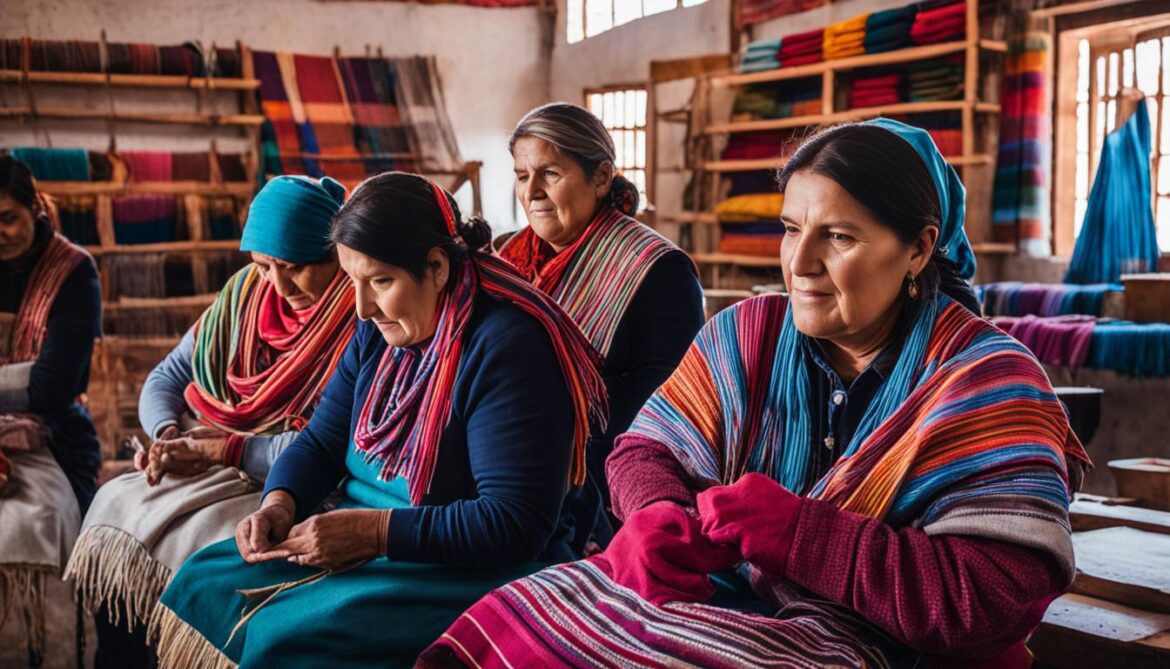
Sustainable Homes in Bolivia
While urban areas in Bolivia boast modern architecture using processed materials, many people in rural areas continue to prioritize sustainable construction practices and utilize natural materials in their homes. Traditional home construction methods, deeply rooted in Bolivian culture and heritage, make use of materials like palm fronds, sod, grasses, stone, and wood. These homes, well-suited to the local climate, are not only cost-effective but also environmentally friendly.
The use of natural building materials in home construction contributes to the preservation of the environment and bolsters a connection to traditional building practices. By employing sustainable materials found locally, Bolivians can reduce their reliance on manufactured products and minimize their carbon footprint. Additionally, these traditional methods help to maintain a sense of cultural identity and pride in Bolivian architecture.
Though the construction of sustainable homes may require more time and effort compared to modern techniques, the benefits far outweigh the challenges. Natural materials offer superior insulation, keeping homes cool in Bolivia’s hot climate and reducing the need for artificial cooling methods. Moreover, the use of local materials helps stimulate the local economy and supports traditional craftsmanship.
Building sustainable homes using traditional methods and natural materials in Bolivia not only promotes environmental preservation but also fosters a sense of cultural continuity and pride in local communities.
As the concept of sustainability gains recognition worldwide, the construction of sustainable homes in Bolivia serves as an inspiration and example for other regions. It showcases how embracing traditional practices and utilizing natural materials can contribute to a greener and more environmentally conscious way of living.
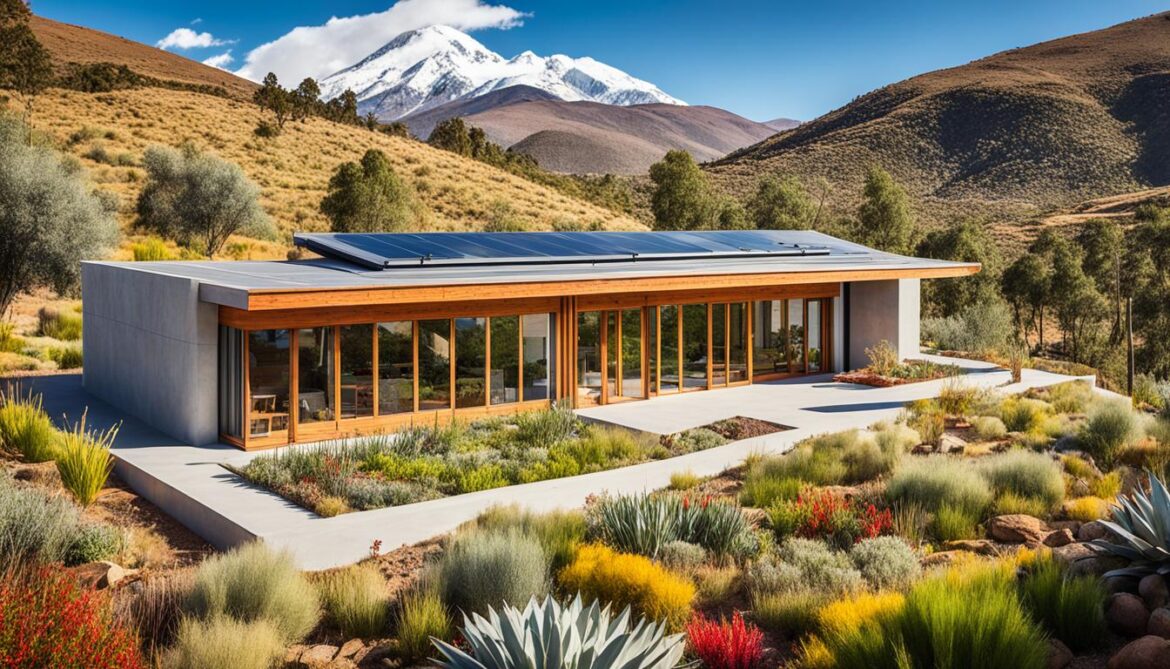
Bolivian Architecture: A Blend of Tradition and Innovation
Bolivian architecture embodies a harmonious blend of traditional building practices and contemporary design elements. This unique fusion comes to life through the use of sustainable materials and innovative techniques. From adobe houses in rural communities to ornate colonial buildings in major cities, Bolivian architecture reflects the country’s rich cultural heritage and the adaptability of its people.
In recent years, architects and designers in Bolivia have been incorporating sustainable principles into their designs, ranging from passive cooling techniques to rainwater harvesting systems. These modern innovations build upon the foundation of traditional construction methods, creating homes that are both aesthetically pleasing and environmentally friendly.
| Bolivian Architecture Highlights | Sustainable Features |
|---|---|
| Adobe Houses | Energy-efficient, thermal insulation properties. |
| Quincha Houses | Constructed using a framework of wooden columns filled with materials like adobe and mud, providing excellent thermal insulation. |
| Colonial Buildings | Ornate facades, incorporating traditional motifs while utilizing sustainable materials. |
| Palm-Frond Structures | Utilizing abundant, renewable palm fronds for roofing materials, promoting sustainability and cultural connection. |
Bolivia’s commitment to sustainable building practices extends beyond residential homes. The country has also implemented eco-friendly initiatives in the construction of public buildings, hotels, and eco-lodges. This holistic approach emphasizes the importance of preserving Bolivia’s natural resources and cultural heritage for future generations.
Bolivian Cuisine and Farming
Agriculture plays a vital role in Bolivian culture and the country’s economy. As a result of its diverse elevations and climates, Bolivia supports a wide variety of crops that thrive in different regions. The sustainable farming practices employed by many Bolivians, coupled with indigenous farming techniques passed down through generations, contribute to the preservation of the land and its resources.
Bolivian cuisine embraces this agricultural heritage by incorporating locally grown ingredients, creating unique and flavorful dishes that reflect the rich cultural tapestry of the country.
Bolivian Crops
The agricultural landscape of Bolivia is teeming with diverse crops that thrive in various microclimates. From the fertile valleys that produce an abundance of corn and potatoes to the tropical regions where exotic fruits like bananas, pineapples, and mangos flourish, Bolivia’s agricultural sector is incredibly diverse.
“The fertile land and varied climate of Bolivia offer ideal conditions for cultivating a wide range of crops, contributing to the country’s vibrant culinary scene.”
Silvia Gonzalez, Bolivian Agricultural Expert
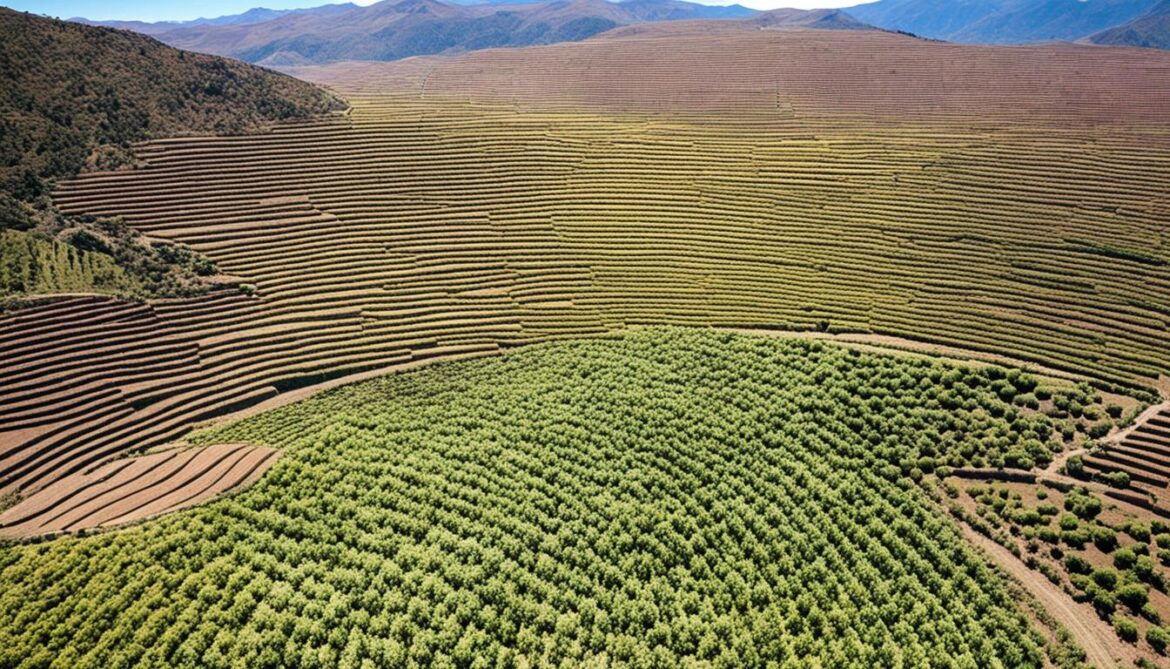
Indigenous Farming Techniques
The indigenous communities of Bolivia have cultivated the land for centuries, harnessing traditional farming techniques that prioritize sustainability and harmonious coexistence with nature. These practices, rooted in indigenous wisdom and respect for Mother Earth, exemplify the importance of preserving the natural balance for future generations.
The indigenous farming techniques in Bolivia include terracing, crop rotation, and agroforestry, which contribute to soil fertility and prevent erosion. These techniques also emphasize the importance of preserving biodiversity and conserving native crop varieties that have adapted to local conditions.
The Flavors of Bolivian Cuisine
Bolivian cuisine is a vibrant fusion of indigenous traditions, European influences, and local ingredients. Traditional dishes reflect the country’s agricultural roots, showcasing an array of bold flavors and unique combinations.
Some iconic Bolivian dishes include:
- Silpancho: A hearty dish consisting of breaded and fried beef, served over rice and potatoes.
- Salteñas: Savory pastries filled with a mixture of meat, vegetables, and spices.
- Quinoa Soup: A nourishing soup made with quinoa, vegetables, and herbs.
The diverse range of Bolivian cuisine celebrates the country’s agricultural bounties and indigenous farming techniques, making it a true reflection of the cultural and culinary heritage of Bolivia.
| Bolivian Crop | Main Region | Primary Use |
|---|---|---|
| Corn | Valleys | Staple ingredient in various dishes |
| Quinoa | Highlands | Source of protein and essential nutrients |
| Potatoes | Valleys and Highlands | Used in numerous traditional recipes |
| Fruits (Bananas, Pineapples, Mangos) | Tropical Regions | Consumed fresh or used in desserts and juices |
Conservation Efforts in Bolivia
The conservation efforts in Bolivia encompass a wide range of stakeholders working together to protect the country’s incredible biodiversity. These stakeholders include government agencies, indigenous communities, and non-governmental organizations, all collaborating to promote sustainable practices and safeguard Bolivia’s natural wonders.
One important aspect of conservation efforts in Bolivia is the management of protected areas. These areas are vital for preserving the diverse ecosystems and unique wildlife found in the country. Through improved protected area management, Bolivia aims to ensure the long-term sustainability of these valuable habitats.
Indigenous land management is another crucial component of conservation in Bolivia. Indigenous communities have a deep connection to the land and possess invaluable traditional ecological knowledge. Their involvement and stewardship of the land play a significant role in maintaining biodiversity and ensuring sustainable practices.
Sustainable financing mechanisms also play a key role in conservation efforts. By developing innovative funding models, Bolivia can support ongoing conservation initiatives and ensure long-term financial stability for biodiversity preservation. These mechanisms enable sustainable financing for activities such as habitat restoration, wildlife monitoring, and community outreach programs.
“Conservation efforts in Bolivia are driven by a collective commitment to protect the environment and preserve the country’s natural heritage. By engaging various stakeholders and implementing sustainable practices, we can work towards a future where Bolivia’s biodiversity thrives.”
Gran Chaco Conservation
One notable conservation project in Bolivia is the Pew Charitable Trusts’ initiative to conserve the Pantanal and the Gran Chaco of South America. This project focuses on improving the management of national parks, supporting indigenous governance, and developing sustainable financing mechanisms for biodiversity conservation.
The Gran Chaco region is one of the most significant wilderness areas in South America, renowned for its vast dry forests and unique wildlife. The conservation efforts in this region aim to protect critical habitats, preserve biodiversity, and promote sustainable development practices that benefit both nature and local communities.
By partnering with local stakeholders and organizations, the Pew Charitable Trusts’ project strives to create a harmonious balance between conservation and sustainable resource use. Through collaborative efforts, the conservation of the Gran Chaco in Bolivia continues to make remarkable progress, ensuring the long-term survival of its exceptional natural heritage.
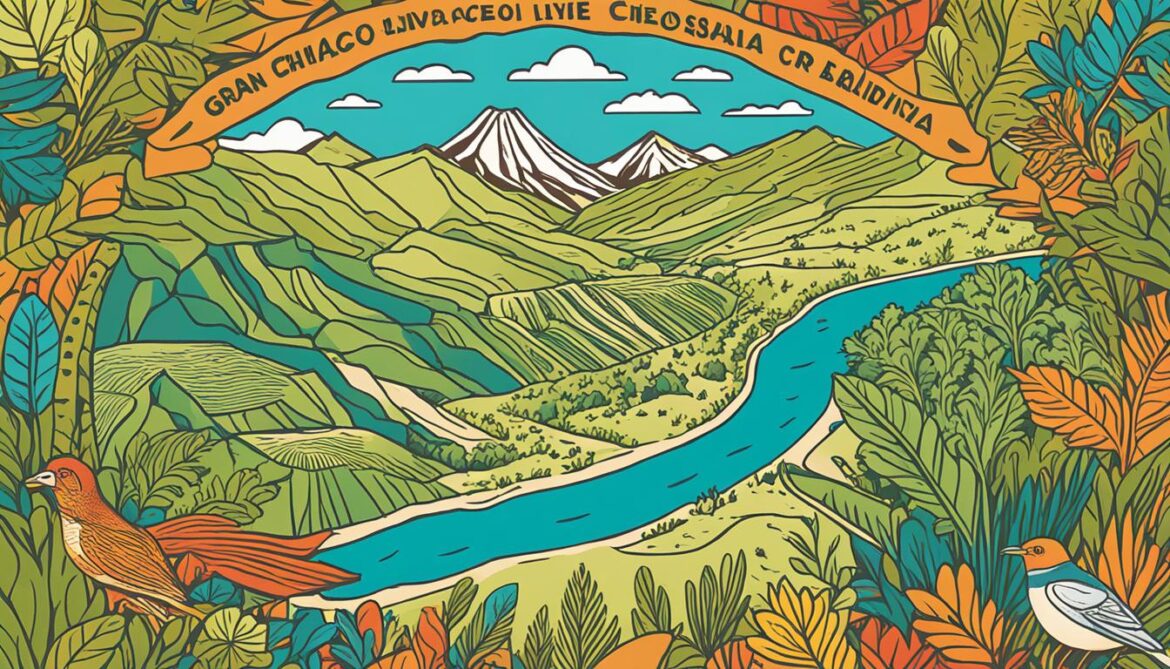
Conclusion
Bolivia Conservation Summary: Bolivia is a country renowned for its exceptional biodiversity and sacred natural sites. With its diverse ecosystems and the invaluable traditional ecological knowledge of indigenous communities, Bolivia is making significant strides in protecting its natural heritage. Despite the numerous threats it faces, conservation initiatives are working diligently to safeguard Bolivia’s remarkable ecosystems and the myriad species that call them home.
Efforts to preserve biodiversity in Bolivia involve collaboration between government agencies, indigenous communities, and non-governmental organizations. These partnerships aim to enhance protected area management, support indigenous land stewardship, and establish sustainable financing mechanisms for conservation. Noteworthy projects, such as the Pew Charitable Trusts’ efforts in the Pantanal and Gran Chaco, contribute to the effective management of national parks, indigenous governance, and biodiversity conservation.
By adopting ongoing conservation efforts and promoting sustainable practices, Bolivia can continue to protect its sacred natural sites and sustain its unparalleled biodiversity. Through the collective commitment of various stakeholders, Bolivia offers a beacon of hope for the global conservation community. It is crucial that the international community continues to support Bolivia’s conservation initiatives, ensuring the preservation of its unique natural heritage for future generations to cherish.




